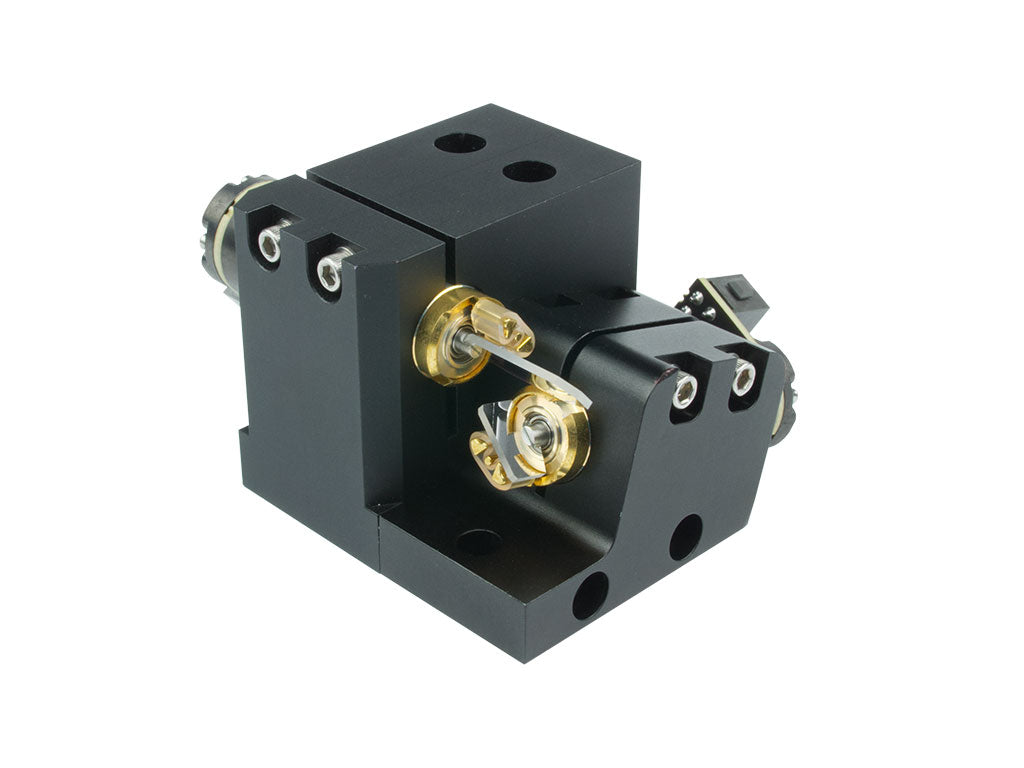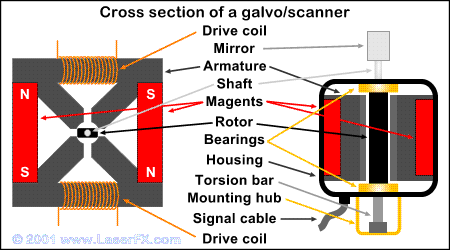Secret Applications of a Galvanometer Scanner in Different Scientific Research Study Area
Galvanometer scanners have come to be indispensable to different scientific study fields, offering enhanced accuracy in applications ranging from biomedical imaging to environmental tracking. Their capacity to promote high-resolution imaging strategies, such as confocal microscopy, plays a vital function in progressing our understanding of cellular frameworks. Moreover, in product processing, these devices improve the precision of laser cutting and welding. As we explore the complex applications of galvanometer scanners, it ends up being noticeable that their impact extends far past plain technological abilities, questioning about their future possibility in arising research study areas.
Biomedical Imaging

In confocal microscopy, galvanometer scanners help with the procurement of pictures with improved resolution and comparison, enabling researchers to picture mobile parts in vivo. The capability to promptly capture numerous focal aircrafts boosts the three-dimensional restoration of cells, giving crucial insights into their style and function.

Moreover, the rapid scanning capacities of galvanometer systems add to innovations in dynamic imaging applications, such as checking mobile reactions to stimulations. Hence, galvanometer scanners are crucial devices in the area of biomedical imaging, advancing study and clinical diagnostics with their accuracy and performance.
Product Handling
Precision in material processing is essential for achieving top notch cause numerous commercial applications (galvanometer scanner). Galvanometer scanners play an important duty in enhancing this precision by allowing quick and exact activity control throughout the handling of materials such as steels, ceramics, and polymers. These tools facilitate strategies like laser cutting, welding, and inscription, which call for finely-tuned changes to make certain optimal outcomes
In laser cutting, as an example, galvanometer scanners enable elaborate styles to be implemented with high fidelity, decreasing waste and boosting production performance. The quick motion abilities allow quick modifications in the laser beam of light path, which is crucial for preserving regular cutting quality across differing material thicknesses. Similarly, in laser welding applications, the precision supplied by galvanometer scanners guarantees solid joints with marginal thermal distortion, thereby enhancing structural integrity.
Additionally, the adaptability of galvanometer scanners to different laser types and wavelengths even more widens their energy in material processing. Their ability to operate in tandem with sophisticated software for real-time surveillance and control adds an added layer of elegance, making it possible for makers to achieve precise requirements customized to details applications. Thus, galvanometer scanners are vital ahead of time the capabilities of product handling innovations.
Optical Characterization
In the realm of optical characterization, the function of galvanometer scanners comes to be increasingly significant as they assist in the evaluation of various optical buildings with high accuracy. These tools allow exact control of laser beams, enabling scientists to systematically probe materials at multiple angles and regularities. This capacity is necessary for identifying the refractive index, absorption coefficient, and spreading properties of diverse products.
Galvanometer scanners are especially effective in techniques such as optical comprehensibility tomography (OCT) and laser-induced fluorescence (LIF), where rapid scanning is critical. By attaining high-speed inflection of the laser setting, galvanometer scanners boost the temporal resolution of these methods, resulting in improved imaging and analysis. In addition, they make it possible for the exploration of complicated communications between light and matter, which click over here is crucial for recognizing product habits under numerous problems.
Additionally, the combination of galvanometer scanners with spectroscopic strategies expands their energy, permitting thorough spooky analysis across a vast array of wavelengths. This adaptability makes them important tools in fields such as products science, biomedical research study, and nanotechnology, where comprehensive optical characterization is critical for advancing knowledge and technology.

Laser Micromachining
The advent of laser micromachining has actually revolutionized producing procedures, allowing the creation of detailed frameworks with exceptional precision. This technique utilizes high-intensity laser beam of lights to precisely remove product from a substratum, making it feasible to make micro-scale components that are important in various industries. The application of galvanometer scanners in laser micromachining boosts the effectiveness and accuracy of this procedure by allowing quick and exact beam of light positioning.
Galvanometer scanners help with the dynamic control of laser beam of lights, making it possible for intricate patterns to be etched or reduced with high fidelity. Their quick reaction times and high-resolution capabilities permit the manipulation of laser pulses, which is crucial for attaining the preferred material buildings and surface area finishes. This innovation is particularly helpful in fields such as electronic devices, where the miniaturization of elements is vital for efficiency improvement.
Moreover, laser micromachining is significantly being used in the clinical field for manufacturing precision instruments and implants. The combination of laser innovation and galvanometer scanning not just streamlines manufacturing process yet also reduces waste and improves overall material use, making it a lasting option for modern manufacturing obstacles.
Ecological Surveillance
Ecological tracking has actually become significantly important in handling the health and examining of communities and metropolitan environments. The assimilation of galvanometer scanners in this field allows precise, rapid, and effective information collection, helping with much better decision-making procedures. These scanners are adept at routing laser light beams or sensors across numerous surfaces, permitting high-resolution mapping of ecological parameters such as air high quality, soil structure, and water pollution.
In air quality surveillance, galvanometer scanners can be employed to evaluate particle matter and aeriform toxins, supplying real-time data that informs public health initiatives. For water high quality assessments, these scanners can help in discovering impurities and gauging physical criteria, therefore making sure conformity with environmental regulations. In remote picking up applications, galvanometer scanners enhance the capacity of satellite and drone systems to catch in-depth photos and data of substantial locations, index identifying eco-friendly adjustments and anthropogenic influences.
The convenience and accuracy of galvanometer scanners make them essential tools in environmental surveillance, contributing significantly to sustainable advancement initiatives and the defense of all-natural sources. As the requirement for efficient environmental management expands, the role of these sophisticated tools will undoubtedly broaden additionally.
Verdict
In summary, galvanometer scanners function as important devices throughout multiple scientific research domains. Their application in biomedical imaging enhances the precision of methods important for cellular visualization additional resources and diagnostics. In material processing, these scanners assist in innovative laser cutting and welding processes, guaranteeing very little distortion. Furthermore, their role in environmental monitoring highlights the significance of accurate data collection in attending to public health and wellness and eco-friendly difficulties. The flexibility and effectiveness of galvanometer scanners remain to drive innovations in these critical fields.
In laser welding applications, the accuracy supplied by galvanometer scanners ensures strong joints with minimal thermal distortion, thus boosting architectural stability.
Moreover, the versatility of galvanometer scanners to different laser kinds and wavelengths better widens their utility in material processing. By accomplishing high-speed modulation of the laser placement, galvanometer scanners enhance the temporal resolution of these approaches, leading to improved imaging and evaluation. The application of galvanometer scanners in laser micromachining improves the performance and precision of this procedure by allowing precise and rapid beam of light positioning.
Galvanometer scanners facilitate the dynamic control of laser light beams, allowing complicated patterns to be etched or reduced with high fidelity.